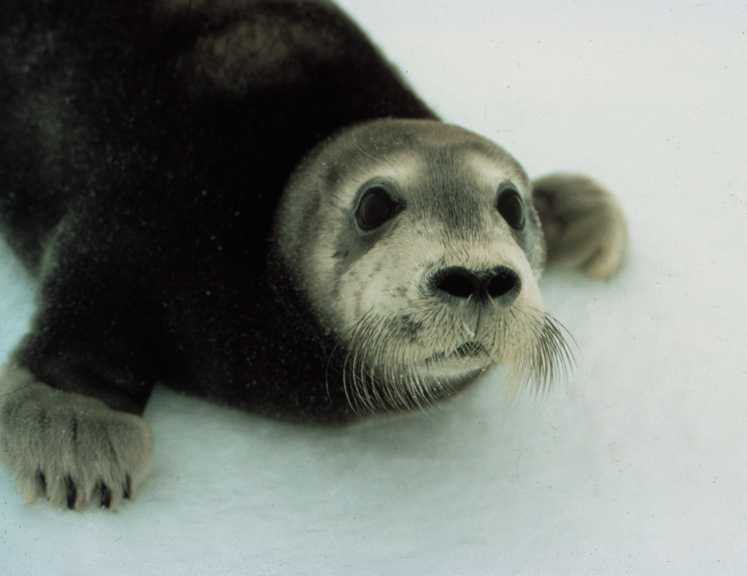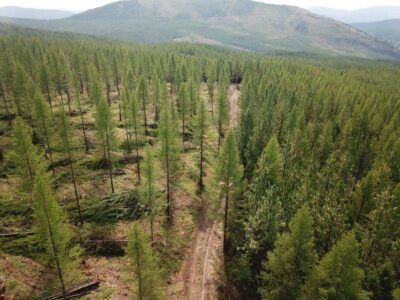Climate Science Takes Win in Effort to Save Bearded Seal
Ninth Circuit upholds NMFS’s reliance on climate projections to 2095 in decision to list Pacific bearded seal as threatened under ESA
Climate change is expected to wipe out critical habitat of the Pacific bearded seal by 2095. This projection, based on IPCC climate data and models, justifies listing the Beringia distinct population segment of the bearded seal as threatened under the Endangered Species Act, according to a recent Ninth Circuit opinion in Alaska Oil and Gas Ass’n v. Pritzker. This explicit acceptance of IPCC climate data and models in assessing species survival as far as 80 years in the future reflects the power of scientific climate projections and the growing public consensus about their accuracy.

On October 24, a three-judge panel – Judges Fisher (Clinton appointee), Paez (Clinton appointee), and Hurwitz (Obama appointee) – upheld the National Marine Fisheries Service (NMFS) 2012 decision to list the bearded seal subspecies, reversing a district of Alaska decision that deemed NMFS’s use of climate projections to 2095 too “speculative.” A decision to list a species as threatened must be made “solely on the basis of the best available scientific and commercial data available,” and requires a determination that the species was “likely to become an endangered species within the foreseeable future throughout all or a significant portion of its range.”
Beringia Pacific bearded seals are the largest species of arctic seal. They are solitary creatures found throughout the Bering and Chukchi Seas. The seals rely on ice floes to rest between ocean floor hunting dives, to give birth and nurse their pups, and for male seal rest while molting. Without this ice during critical life stages, the seals will not be able to survive in their current habitat. NMFS therefore used observational and predictive IPCC data and multiple climate models that assessed when the sea ice would melt too much to support the seal population at the necessary times each year.
Plaintiffs in this case argued that the IPCC climate models could not reliably predict climate change beyond 2050 and therefore did not constitute the “best available scientific and commercial data available.” They also argued that setting a year beyond 2050 as the outer boundary of a “foreseeable future” analysis constituted a change from agency policy that required an explanation. NMFS also failed to adequately demonstrate a causal connection between habitat loss and the bearded seal’s survival. Finally, to justify its “threatened” listing, NMFS needed to have determined that climate change would be so severe as to place the bearded seal in danger of extinction by 2100.
The Ninth Circuit disagreed on all grounds. Citing its recent decision in Alaska Oil and Gas Association v. Jewell and the D.C. Circuit’s 2013 decision in In Re Polar Bear Endangered Species Act Listing, the court upheld the use of IPCC climate models to support a determination that the bearded seal likely would become endangered in the foreseeable future – by 2095. For the period 2007 to 2050, NMFS appropriately examined IPCC climate projections based on current emissions data. More significant, for the second half of the century, NMFS drew on future “medium” and “high” emissions scenario projections to justify the listing. The court accepted this scientific analysis, concluding that the volatility of these future climate projections did not preclude their use in NMFS’s decision. Providing further support, climate studies published after the Proposed Listing Rule indicated warming in the Arctic at a much faster rate than the IPCC projection anticipated.
Next the court noted that NMFS may determine an appropriate timeframe for its foreseeable future analysis based on the best data available for a given species and habitat. NMFS’s dynamic interpretation of “foreseeable future” reflected a recent notice from the Solicitor of the Department of the Interior indicating that the applicable timeframe must be supported by reliable data and would be different for different species and threats.
The panel also concluded that NMFS had adequately demonstrated a causal link between sea ice melt and the bearded seal’s threatened survival. NMFS could not be required to use a “wait and see” approach until it had quantitative data on the species’ population decline and the exact year of its tipping point. To require otherwise would likely mean waiting until the species had already reached that point. Nor did NMFS need to calculate the magnitude of the threat to the species’ future survival and that it would be in danger of extinction by 2100. Rather, NMFS need only determine that the species will more likely than not become endangered in the foreseeable future.
This decision is a big win for climate science. If certainty in climate models were required, no species could be listed as threatened due to future climate change. That courts are willing to accept agencies’ assessments of climate projections as far out as 2095 bodes well for aggressive future climate responses.
But has the bearded seal won? In most cases, limiting the direct human destruction of critical habitat will keep a threatened species from becoming endangered or extinct. But with climate change, much of the projected warming is already baked in. And no ESA-induced limitation on an individual action will adequately protect the bearded seal’s habitat from melting away. Rather, protecting the seal from extinction requires limiting and possibly reversing the effects of climate change. That will require deep emission cuts and a substantial change from business as usual. Whether that is possible depends in large part on our elected officials.
Tomorrow we’ll elect the next US president: one who understands that climate change is wreaking havoc with our natural systems or one who claims it’s a hoax perpetrated by the Chinese. That president will determine whether the US shifts toward serious cuts in emissions with regulatory programs like the Clean Power Plan and responds to climate impacts in a scientifically rigorous manner. Even if it turns out to be too late to protect some species’ habitat, actions to list species based on climate projections represent an important step toward acknowledging and fighting climate change and its impacts on wildlife. So at least today I have some peace of mind knowing that the Ninth Circuit understands the severity of climate change and the importance of climate projections, even if one presidential candidate does not.








Reader Comments